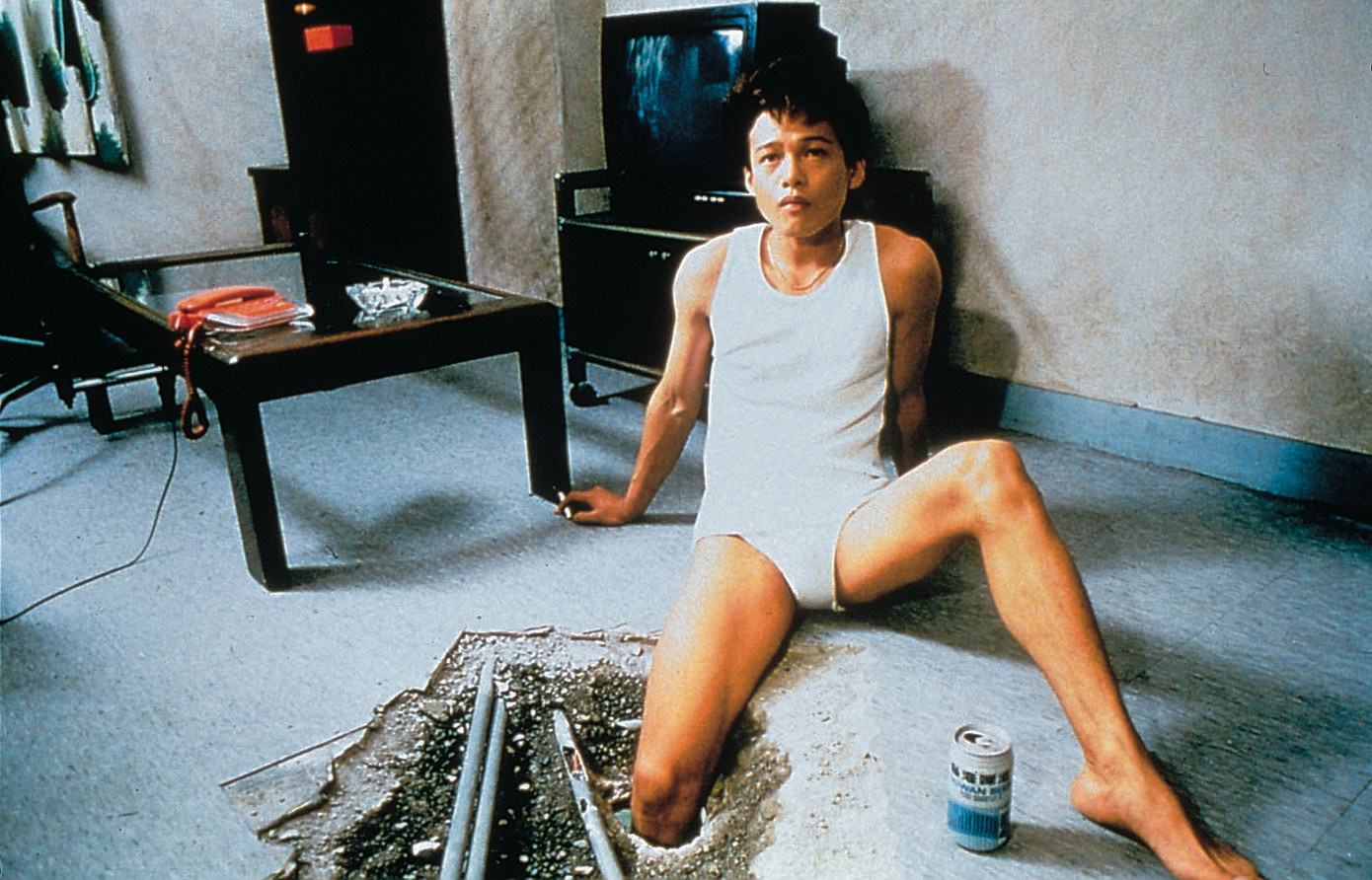THE HOLE. This is not a classic science fiction disaster story

Tsai Ming-Liang, described as a representative of the second New Wave of Taiwanese cinema, often emphasizes in interviews that his films reflect a highly personal and subjective view of the world around him. His style – visible also in “The Hole” – is characterized by long takes, minimal editing, a camera that observes characters during the most mundane activities, an acute sensitivity to detail, and a refined soundscape, all elements designed to immerse the viewer in a state of contemplation.
Tsai quickly garnered widespread acclaim among European critics, winning the Golden Lion at Venice in 1994 for “Vive l’amour”. His subsequent works continue this personal, auteur-driven style, also revealing his profound fascination with European filmmakers, which he explicitly expresses in “What Time Is It There?”, where he includes frames from François Truffaut’s “The 400 Blows“. Tsai’s work stands in stark contrast to zero-degree style cinema and the sensory anesthesia of postmodern film, which dominates contemporary cinematography. The character Hsiao-Kang, portrayed in almost every film by the irreplaceable Lee Kang-Sheng, serves as Tsai’s alter ego, with the recurring obsessions and fears of his characters becoming a hallmark of his work, through which he crafts a coherent, anxiety-laden vision of contemporary society.

Dampness. Water. A dripping faucet, constant rain, soaked clothes, flooded apartments—water recurs as an integral element in Tsai’s works, symbolizing the isolation, alienation, and sense of aimlessness felt by his characters. This is also the case in “The Hole”. Here, water represents not only the characters’ emotional states but also a fundamental part of the spaces they inhabit. It is the space that shapes the characters and profoundly defines those who exist within it. The cramped, cluttered apartment that the main character tirelessly tries to restore to order—drying floors, wiping puddles from a leaky ceiling, and reattaching peeling wallpaper—materializes her need to control inner chaos and emptiness. The characters constantly move through empty rooms, ritualistically pour instant noodles, and roam dingy hallways. Their identities are expressed through and shaped by the physical manifestations of their daily lives.
The film’s story unfolds a few days before the year 2000, in a place deserted due to an epidemic outbreak. However, the main characters decide to stay in this contaminated area, consciously facing their impending death. This brief plot outline may sound like a sci-fi disaster narrative with a fast-paced storyline. Nothing could be further from the truth—”The Hole” contradicts typical genre clichés in almost every shot. The director consciously uses genre conventions, including themes typical of science fiction, along with surreal and incongruous musical scenes, which reduce the realism and viewer engagement with the on-screen events, thereby challenging the popular zero-degree style. The songs, composed by Grace Chang, are not a frivolous addition nor a mere homage from the director to promote her talent. These pieces reflect the inner desires and fears of the characters. It’s no surprise when a song containing the line “(…) Your love is all I want (…)” appears just after the characters exchange meaningful glances for the first time. The lyrics express the unspoken longings of these lonely characters, each seeking a simple gesture of affection.

Distancing the viewer from the on-screen world is a hallmark of Tsai Ming-Liang’s style. He often says that cinema should not be a predictable product of the entertainment industry, emphasizing that he considers each of his films as a work of art—a personal, artistic manifesto. His reflections on the essence of cinema are directly presented in “The Hole”, underscoring the undeniable artistic self-awareness of the director. Each character, through the titular hole—caused by a clumsy repairman attempting to fix a defect in one man’s apartment—becomes a voyeur, a spectator with an increasing urge to control the object on the other side of the thin ceiling/floor barrier. Once again, it is we—the viewers, voyeurs, cinephiles—who enter the world of the characters, becoming the central subject of the director’s interest in “The Hole”. Tsai Ming-Liang explores the natural pleasure of watching and peeping, which has been famously analyzed by masters like Hitchcock in “Rear Window”.
“The Hole” is one of the most profoundly lonely films I have ever seen. While cinema often employs countless “tricks” to make the fictional world realistic, paradoxically, it is Tsai Ming-Liang—the virtuoso of long takes, slow pacing, and minimal editing—who evokes a surprisingly strong empathy for his characters. It could be said that in their prosaic activities, we find the essence of the characters’ existence, where the primary actor is the filmic space itself. The characters live in a unique symbiosis with their environment, absorbing the all-encompassing, mysterious “plague,” only to release it back into the bleak surroundings alongside their fears and unfulfilled desires.
Through science fiction conventions, the director expresses a universal fear of the future and the development of civilization. Tsai Ming-Liang once again displays a gift for keenly observing lost, isolated souls in today’s world. “The Hole” could be viewed as a personal exploration of modern slaves—not only of media but of material possessions in general—who reflect the “human cockroaches” fleeing to their “basements” like the infected characters, seeking refuge within four walls filled with screens and images.

